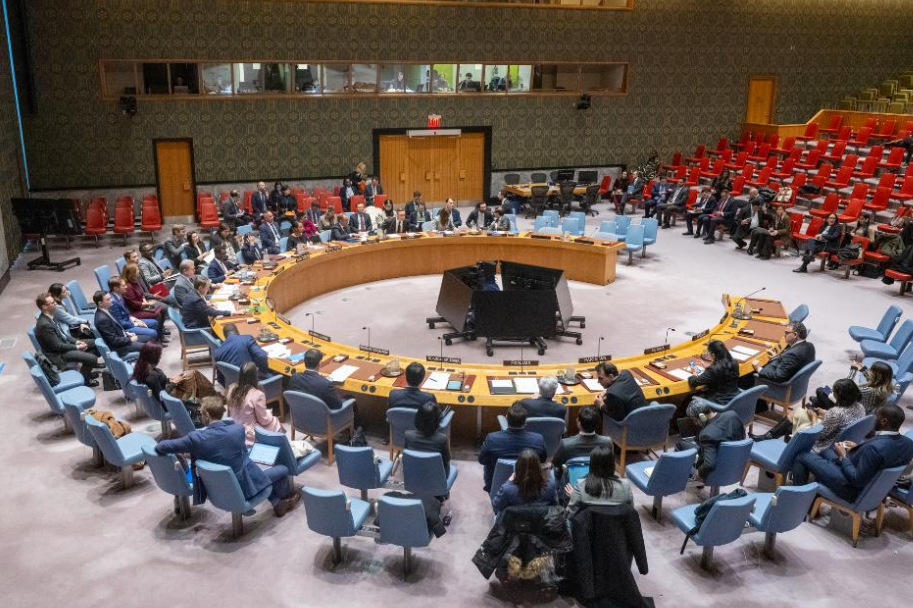Unity shown by farmers could lead to a policy shift in India


Protests by Indian farmers against three new farm laws have dragged on for months with no substantial progress. Post-colonial India has witnessed similar movements, but the current one is unique in various ways.
First, this farmers' movement is more of a persuasive one, aiming to convince the government to repeal the laws, which farmers fear will weaken traditional markets, where minimum prices are guaranteed, by allowing large companies to buy directly from farmers.
The movement is also meant to be nonpolitical, though most of the opposition political parties are supporting it, and it has turned out to be a camp-in protest. The Indian government has not allowed the farmers to enter New Delhi, and has used limited force such as water cannons and tear gas to stop them at the outskirts.
Second, the level of discipline and mutual care of Indian farmers displayed in the process is unprecedented. Farmers' representatives are participating in negotiations with collective leadership and strength, displaying a high level of determination, commitment and solidarity. They have announced their agenda for broad-basing the agitation through tractor rallies and mass awareness campaigns.
It is the first time in recent times that farmers, laborers and small traders have gotten together, exhibiting unity on an unforeseen scale. The protest is likely to bust the myth that, though politically powerful, Indian farmers are not organized enough to shift policy balance in their favor while the well-organized corporate sector can initiate policies that serve their interests.
Third, part of the international community has shown support for farmers' rights, so some political leaders in India have accused the farmers of being secessionists or terrorists instigated by foreign powers.
The government's initiative on negotiations came to no avail, so it has changed its strategy to mobilize farmers' support for the three laws, adding to the trust deficit between farmer organizations and the government. Observers say the deficit is likely to deepen and result in a path of confrontation rather than negotiation.
In fact, the farmers' agitation has not been an instant response to the policies introduced last year. It is an expression of deeper discontent and agrarian distress accumulated over a period of time.
Back in the feudal and colonial era, Indian farmers were exploited and oppressed. In post-colonial India, agrarian reform was introduced. The first phase of the reform was farm-centric, aiming to fulfill the pledge to introduce structural changes including ownership of agricultural land. There was also the abolition of intermediaries, which means the government directly came in contact with farmers.
Subsequently, during the second phase, an increasing food shortage shifted the policy to farming-centric to increase productivity to feed the growing Indian population. Then the need for relevant services and infrastructure resulted in the farmer-centric policy in the third phase.
But the reform did not mitigate the farmers' discontent. The market balance was still in favor of nonagricultural products and the manufacturing/services sector. The worsening conditions of farmers culminated in an increase in suicides. Distress and discontent have continuously accumulated.
Meanwhile, the rhetoric of doubling farmers' income by 2022 made it imperative for the government to create an impression of having meaningful reform. Therefore, the three laws have been enacted with attractive words, such as the facilitation and promotion of agri-trade and commerce, and the empowerment and protection of farmers.
But the farmers have not been moved by those lofty words. Rather, the hasty passage of the laws has triggered their discontent and generated further suspicions about the government's intentions. Farmers did not perceive the provisions as favorable. Therefore, various farmers' organizations came together to persuade the government to repeal the laws, leading to the current prolonged agitation.
Farmers have been highly assertive, irrespective of adverse weather or the government's insensitive attitude despite the more than 50 deaths during the protests, many through road accidents or exposure to cold weather. A senior minister and former president of the ruling Bharatiya Janata Party said the root cause of agitation is surplus food grain and minimum support prices that are higher than market prices.
Thus, a wide chasm exists between what the government proclaims and what the farmers uphold. The farmers have not been swayed by deceptive tactics and polarization strategies.
The government has set Friday as the date for resuming talks, but the agitation is likely to continue with renewed strength before any successful negotiations, and it seems no agreement will be reached quickly.
Whatever the result, the movement has indicated a new trend of social change and an attitude shift in India's village community.
Before, farmers and villagers were attracted to urban life, and people became urbanites and regarded villages and the agricultural profession as a sign of backwardness, while the services and manufacturing sectors were seen as glorious.
Now there seems to be an assertion that agriculture is glorious. Educated young people are actively taking part in it, and the COVID-19 pandemic and subsequent lockdowns might have also contributed to this shift.
The author is an emeritus fellow, former director and professor of the South Asia Studies Centre of the University of Rajasthan in India.

































